Merhaba,
In this email we’re still on our way to Safronbolu where we will spend our final night before heading back to Ankara. We stopped at Yὂrὕk Kὂyὕ and everyone was charmed by everything there. Yὂrὕk means Nomad, usually thought of as the “real Turkish people” and Kὂyὕ means “of the village.” Together it means Nomad Village. ….I think.
Ru
Yörük Köyü : Michelin’s recommendations
Yörük Köyü, a smaller version of Safranbolu, has neither been granted World Heritage status nor embarked upon restoration of its old buildings. The result is that this charming town, with its superb 16th Century Ottoman houses, has a truly authentic and faded appearance which makes it a delight to visit. Some of its buildings are a little run down, but this only adds to its nostalgic charm. Even the locals seem unchanged by the passing centuries. The most beautiful house in the village, Sipahioglu Konagi, is open to the public and is home to a charming small museum which, although modest in style, is nonetheless interesting. http://travel.michelin.com/web/destination/Turkey-Yoruk_Koyu
A short distance from Yörük Köyü we stopped for lunch.
|
Our lunch stop restaurant……and souvenir shops… Randal had lentil soup; I had grilled chicken. Tazeena bought 2 ceramic pots that made for lots of laughs and one interesting airport security story. |
|
Yὂrὕk Kὂyὕ villagers greet you upon arrival A small bakery/cafe |
|
This “house of” advertises Yörük style pancakes, yogurt drink and baklava |
|
Notice the table to the left with layers of rolled dough and the giant bag of flour in the corner. I think it must take lots of practice to do this so perfectly. The dough was being rolled out for the next batch of baklava, though Gὂzleme dough is rolled out in a similar manner. * The name Gὂzleme originates from the word "eye" (in Turkish gὂz means eye). When you start to cook it, you will see some little brown round shaped spots on it, which gives Gὂzleme its name:) http://www.turkishcookbook.com/2007/03/gozleme.php gives a recipe for Gὂzleme. |
|
Finished baklava: we only got a photo and not a taste. http://www.karakoygulluoglu.com/eng/index.asp?page=baklava1.asp is a great website discussing the history of baklava in Turkey. |
|
Ottoman house model |
|
The double teapot set up on the heater and a gὂzleme cooker on the right. At least that’s what I think it is. The gὂzleme are cooked on the top part of the top sort of like an inverted wok. |
|
A fixer upper for someone. |
|
Yὂrὕk Kὂyὕ streets I believe the lady with the rolling pin A local gentleman |
|
Decorative bits and Yὂrὕk Kὂyὕ Gothic |
|
This next bit is really interesting…..I think especially for our Roanoke friends Jane and Peter. Ropes on the door indicate if the family is at home. If it is hanging straight down, the family is home. If the rope is pulled across with one knot, they’ll be home soon. The more knots, the longer the family would be away. I don’t remember if locks are ever used. |
|
Even in Yὂrὕk Kὂyὕ they collect blue caps. |
No virus found in this message.
Checked by AVG – www.avg.com
Version: 2013.0.2904 / Virus Database: 3162/6310 – Release Date: 05/09/13
May 9, 2013
Netsel Marina
Marmaris, Turkey
Merhaba,
In this email we’re still on our way to Safronbolu where we will spend our final night before heading back to Ankara. We stopped at Yὂrὕk Kὂyὕ and everyone was charmed by everything there. Yὂrὕk means Nomad, usually thought of as the “real Turkish people” and Kὂyὕ means “of the village.” Together it means Nomad Village. ….I think.
Ru
Yörük Köyü : Michelin’s recommendations
Yörük Köyü, a smaller version of Safranbolu, has neither been granted World Heritage status nor embarked upon restoration of its old buildings. The result is that this charming town, with its superb 16th Century Ottoman houses, has a truly authentic and faded appearance which makes it a delight to visit. Some of its buildings are a little run down, but this only adds to its nostalgic charm. Even the locals seem unchanged by the passing centuries. The most beautiful house in the village, Sipahioglu Konagi, is open to the public and is home to a charming small museum which, although modest in style, is nonetheless interesting. http://travel.michelin.com/
A short distance from Yörük Köyü we stopped for lunch.
|
Our lunch stop restaurant……and souvenir shops… Randal had lentil soup; I had grilled chicken. Tazeena bought 2 ceramic pots that made for lots of laughs and one interesting airport security story. |
|
Yὂrὕk Kὂyὕ villagers greet you upon arrival A small bakery/cafe |
|
This “house of” advertises Yörük style pancakes, yogurt drink and baklava |
|
Notice the table to the left with layers of rolled dough and the giant bag of flour in the corner. I think it must take lots of practice to do this so perfectly. The dough was being rolled out for the next batch of baklava, though Gὂzleme dough is rolled out in a similar manner. * The name Gὂzleme originates from the word "eye" (in Turkish gὂz means eye). When you start to cook it, you will see some little brown round shaped spots on it, which gives Gὂzleme its name:) http://www.turkishcookbook.com/ gives a recipe for Gὂzleme. |
|
Finished baklava: we only got a photo and not a taste. http://www.karakoygulluoglu.com/ is a great website discussing the history of baklava in Turkey. |
|
Ottoman house model |
|
The double teapot set up on the heater and a gὂzleme cooker on the right. At least that’s what I think it is. The gὂzleme are cooked on the top part of the top sort of like an inverted wok. |
|
A fixer upper for someone. |
|
Yὂrὕk Kὂyὕ streets I believe the lady with the rolling pin A local gentleman |
|
Decorative bits and Yὂrὕk Kὂyὕ Gothic |
|
This next bit is really interesting…..I think especially for our Roanoke friends Jane and Peter. Ropes on the door indicate if the family is at home. If it is hanging straight down, the family is home. If the rope is pulled across with one knot, they’ll be home soon. The more knots, the longer the family would be away. I don’t remember if locks are ever used. |
|
Even in Yὂrὕk Kὂyὕ they collect blue caps. |

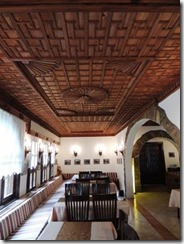
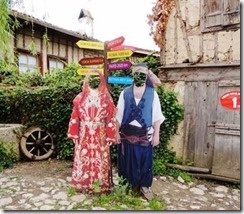
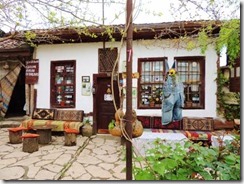
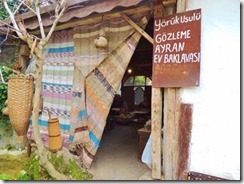
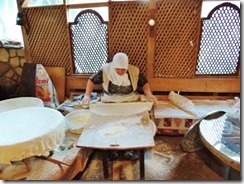
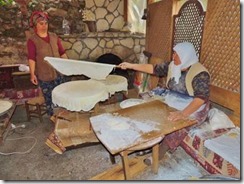
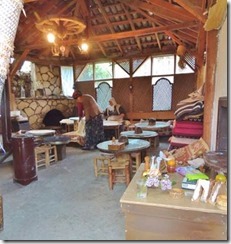
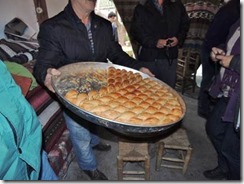
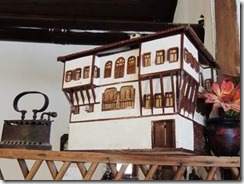
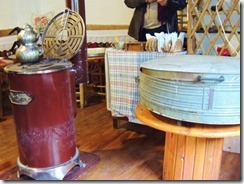
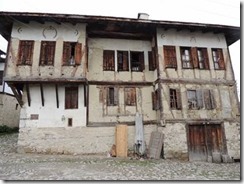
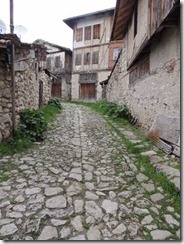
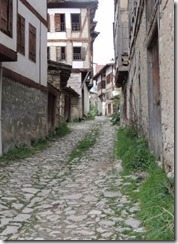
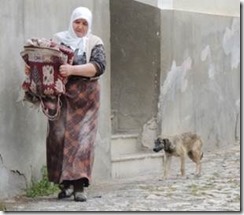
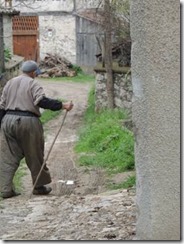
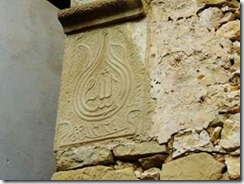
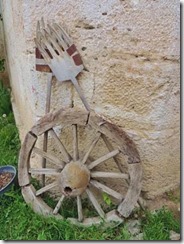
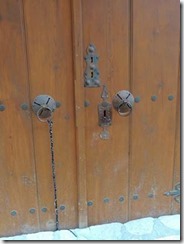
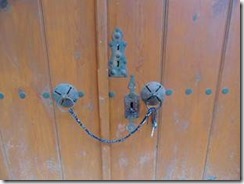
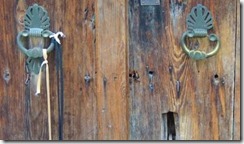
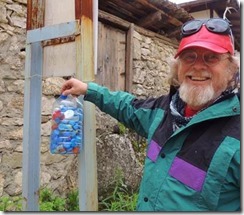
![clip_image001[3] clip_image001[3]](http://www.mydoramac.com/wordpress/wp-content/uploads/2013/05/clip-image0013-thumb.jpg)
![clip_image002[3] clip_image002[3]](http://www.mydoramac.com/wordpress/wp-content/uploads/2013/05/clip-image0023-thumb.jpg)
![clip_image003[3] clip_image003[3]](http://www.mydoramac.com/wordpress/wp-content/uploads/2013/05/clip-image0033-thumb.jpg)
![clip_image004[3] clip_image004[3]](http://www.mydoramac.com/wordpress/wp-content/uploads/2013/05/clip-image0043-thumb.jpg)
![clip_image005[3] clip_image005[3]](http://www.mydoramac.com/wordpress/wp-content/uploads/2013/05/clip-image0053-thumb.jpg)
![clip_image006[3] clip_image006[3]](http://www.mydoramac.com/wordpress/wp-content/uploads/2013/05/clip-image0063-thumb.jpg)
![clip_image007[3] clip_image007[3]](http://www.mydoramac.com/wordpress/wp-content/uploads/2013/05/clip-image0073-thumb.jpg)
![clip_image008[3] clip_image008[3]](http://www.mydoramac.com/wordpress/wp-content/uploads/2013/05/clip-image0083-thumb.jpg)
![clip_image009[3] clip_image009[3]](http://www.mydoramac.com/wordpress/wp-content/uploads/2013/05/clip-image0093-thumb.jpg)
![clip_image010[3] clip_image010[3]](http://www.mydoramac.com/wordpress/wp-content/uploads/2013/05/clip-image0103-thumb.jpg)
![clip_image011[3] clip_image011[3]](http://www.mydoramac.com/wordpress/wp-content/uploads/2013/05/clip-image0113-thumb.jpg)
![clip_image012[3] clip_image012[3]](http://www.mydoramac.com/wordpress/wp-content/uploads/2013/05/clip-image0123-thumb.jpg)
![clip_image013[3] clip_image013[3]](http://www.mydoramac.com/wordpress/wp-content/uploads/2013/05/clip-image0133-thumb.jpg)
![clip_image014[3] clip_image014[3]](http://www.mydoramac.com/wordpress/wp-content/uploads/2013/05/clip-image0143-thumb.jpg)
![clip_image015[3] clip_image015[3]](http://www.mydoramac.com/wordpress/wp-content/uploads/2013/05/clip-image0153-thumb.jpg)
![clip_image016[3] clip_image016[3]](http://www.mydoramac.com/wordpress/wp-content/uploads/2013/05/clip-image0163-thumb.jpg)
![clip_image017[3] clip_image017[3]](http://www.mydoramac.com/wordpress/wp-content/uploads/2013/05/clip-image0173-thumb.jpg)
![clip_image018[3] clip_image018[3]](http://www.mydoramac.com/wordpress/wp-content/uploads/2013/05/clip-image0183-thumb.jpg)
![clip_image019[3] clip_image019[3]](http://www.mydoramac.com/wordpress/wp-content/uploads/2013/05/clip-image0193-thumb.jpg)
![clip_image020[3] clip_image020[3]](http://www.mydoramac.com/wordpress/wp-content/uploads/2013/05/clip-image0203-thumb.jpg)
![clip_image021[3] clip_image021[3]](http://www.mydoramac.com/wordpress/wp-content/uploads/2013/05/clip-image0213-thumb.jpg)